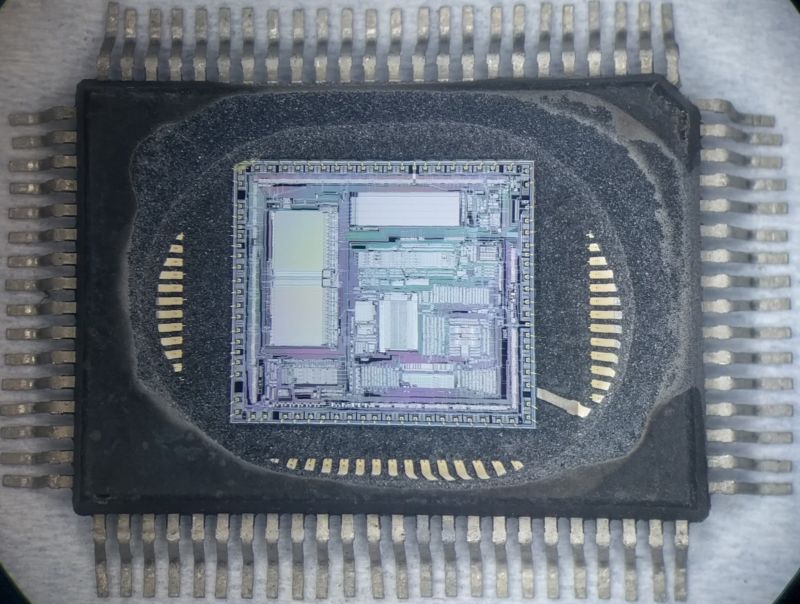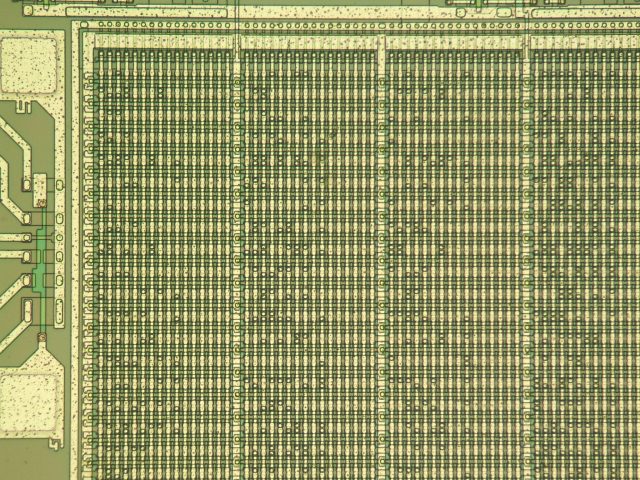
The community behind the Multiple Arcade Machine Emulator (MAME) has gone to great lengths to preserve thousands of arcade games run on hundreds of different chipsets through emulation over the years. That preservation effort has now grown to include the physical opening of DRM-protected chips in order to view the raw code written inside them—and it's an effort that could use your crowdsourced help.
While dumping the raw code from many arcade chips is a simple process, plenty of titles have remained undumped and unemulated because of digital-rights-management code that prevents the ROM files from being easily copied off of the base integrated circuit chips. For some of those protected chips, the decapping process can be used as a DRM workaround by literally removing the chip's "cap" with nitric acid and acetone.With the underlying circuit paths exposed within the chip, there are a few potential ways to get at the raw code. For some chips, a bit of quick soldering to that exposed circuitry can allow for a dumped file that gets around any DRM further down the line. In the case of chips that use a non-rewritable Mask ROM, though, the decappers can actually look through a microscope (or high-resolution scan) to see the raw zeroes and ones that make up the otherwise protected ROM code.
Come together, right now, over chips

Decapping is a time-consuming and expensive process, but the MAME development community has shown a willingness to put in the effort and money. One crowdfunded MAME decapping effort from years ago led to the dumping of important chips found in games like Bubble Bobble, Galaga, Arkanoid, Street Fighter EX, and dozens of others. By 2015, though, that effort had fallen apart amid allegations that a key member had disappeared from the Internet and essentially run off with dozens of rare chips in his possession.
Since then, the Caps0ff project has taken up the MAME decapping mantle, raising money to acquire and decap hundreds of undumped chips in various states of disrepair. The project has already offered detailed breakdowns of its decapping efforts on chips from games like Bad Dudes, Mortal Kombat 4, and some cult classic shmups from developer Toaplan, among others.

The first chip of that set was successfully transcribed by 88 volunteers in about 15 hours this week, according to MAMEWorld poster drewcifer. That tool is set to be improved to make future chip transcriptions even more efficient—keep an eye on the Caps0ff blog if you want to contribute in the future.
The decapping effort brings to mind the Apple II preservation scene, which has gone to great lengths to crack and copy decades-old games and programs written for the monochrome '80s computer. The lesson here may be that, with sufficient time and attention, there's probably no DRM scheme that can't be broken by a dedicated group of historically minded fans.
reader comments
96